Exteriors
How to use colour for exteriors
What do you think about using colour for exteriors? Have you ever considered using colour for the exterior of your home? Or are you a fan of a safe neutral colour palette? Children love colour and respond very well to its uplifting effects but as we get older and more sensible we tend to shun colour and its gorgeous effects for a life that is more ‘stylish'. We end up with homes that are timeless and elegant, which of course is no bad thing, but we also lose something in the process.
I'm not suggesting that we all find an exterior wall and paint it a bright colour but there are ways to introduce a little bit of personality into a classic exterior palette.
Let me show you how to use colour for exteriors to bring a little sunshine into your life.
Review the existing colours
Don't forget that if you have a brick home you may already have quite a colour statement on the exterior. You may have a beautiful brick that you want to enhance or you may dislike your brick and you want to detract from it.
For example, if you have reddish bricks that you are not so keen on, don't paint your front door or trims to match. Use a smart dark grey for the trim and front door to offset the richness of the bricks. If however you have a beautiful aged brick that you love that has these tones then you can add a red front door to pull out the colours in the brick.
So consider carefully what you already have and decide whether you want to disguise or enhance it.
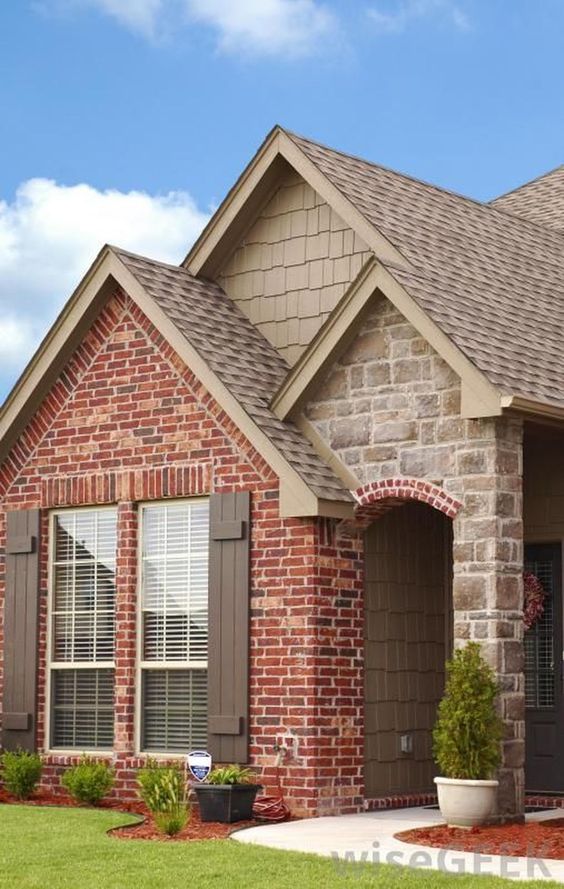
Pulling out the beige in the mortar for the paint and stone colours of this facade makes the red a beautiful accent colour on the house.
A colourful front door
This of course is the simplest and one of the most effective ways to add a touch of colour and personality to your home. A weekend job, painting your front door a beautiful rich colour is an easy way to bring some personality to your home.
The colour you choose will depend a lot on your personality but if you like the idea of some colour but feel it may jar with the timeless look of your house, then consider a colour that contains a fair degree of grey. The addition of grey to any colour, particularly for those to be used on exteriors, knocks back the brightness and makes the colour more approachable.
Never choose any exterior colours while you are inside. You absolutely must paint a large sample board with two coats of your chosen colour and view it in situ outside. This way you can determine whether you have chosen a colour with too much grey so that it doesn't give you the uplifting statement that you were looking for or whether the colour doesn't have enough grey and is much brighter than you had anticipated.
Viewing your chosen colour inside from a small sample chip will never give you an appreciation for what you will end up with.
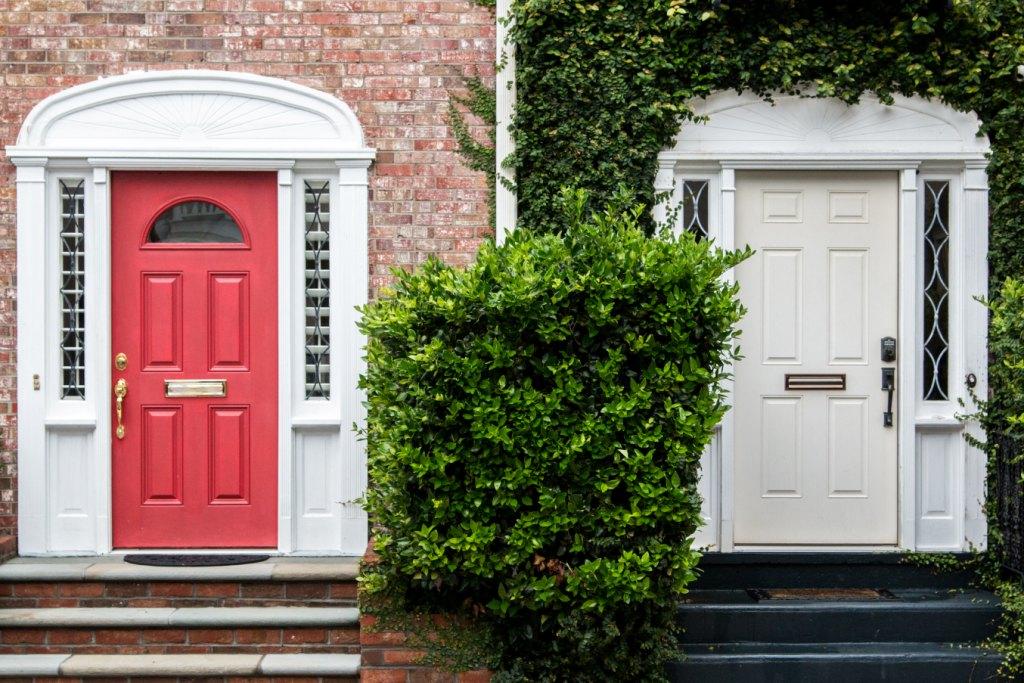
Do you prefer the red front door or the white front door? Always consider the other colours that you have on the exterior of your home. Don't forget that natural elements like brick and timber are colours too and will need to be taken into account.
Related: Colourful Front Doors – what they say about you
A word of caution though when painting a front door. If the door gets a lot of direct sunlight, it can warp and void the manufacturer's warranty if painted a dark colour. Consider the aspect of your entrance. If you have a porch, facing east or south and the sun doesn't hit the door you should be fine. If in doubt, use a light colour.
A colourful entrance
If you prefer a more understated front door in timber, black or white then you can always add some colour with some styling. This will increase your curb appeal and provide you with a nice colour statement to welcome visitors.
Remember that whenever you use a bright colour against a predominantly neutral backdrop that your eye is drawn directly to it so you need to ensure that you love it and that you keep the plants looking good.
Global use of colour for exteriors
There are some gorgeous examples of colour used on houses around the globe. Always consider though that there is often an historical reason for using certain colours. These are designed to suit their locality and in particular the type of light they receive and cannot always be translated to your local environment.
Falu Red houses are prevalent through Scandinavia and this is often also known as Swedish Red. A by-product of copper, this colour was used on houses in the 16th and 17th centuries to imitate brick. Rarely seen in cities now but popular still throughout the countryside. In a locality that during winter will have extremely short days and very limited sunlight, the injection of this gorgeous rich red is an uplifting statement and synonymous with the location.
A similar colour in Australia is Indian Red which is slightly deeper and richer and although not really popular at the moment, it is nonetheless a great exterior colour for a countryside home that is not in full sun.
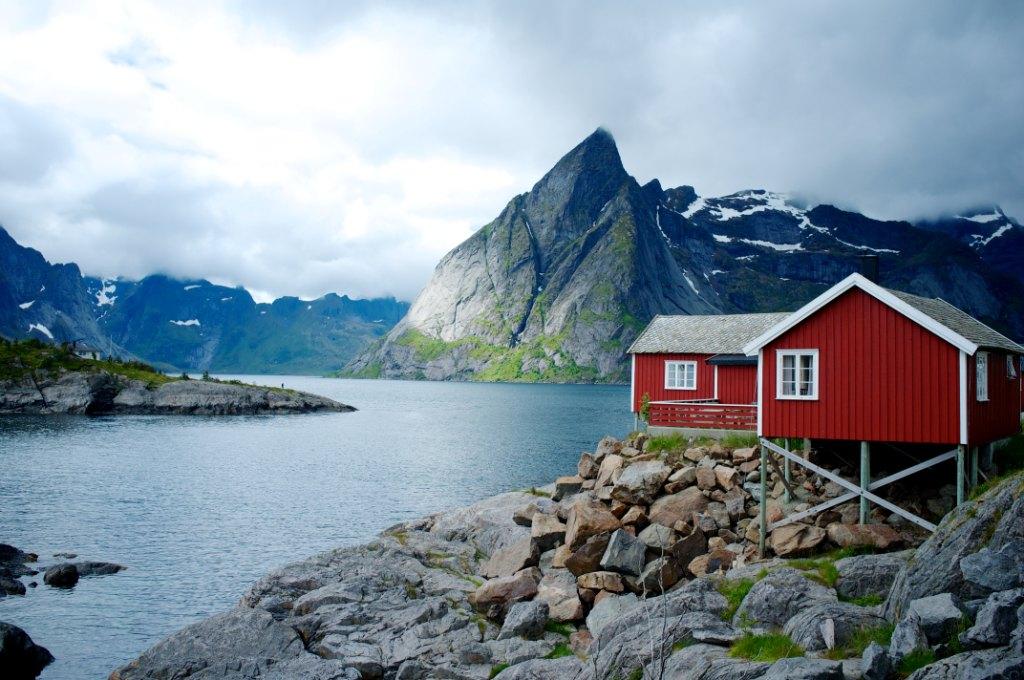
Mediterranean homes use gorgeous colour on their exteriors and although the light would be different to Australia, the sun is very bright and pretty constant but they don't shy away from colour. What they do which makes it work though is to use natural pigments associated with their region. Paints are made in a traditional way and are often lime washes to give a soft and mottled patina rather than a full solid coverage.
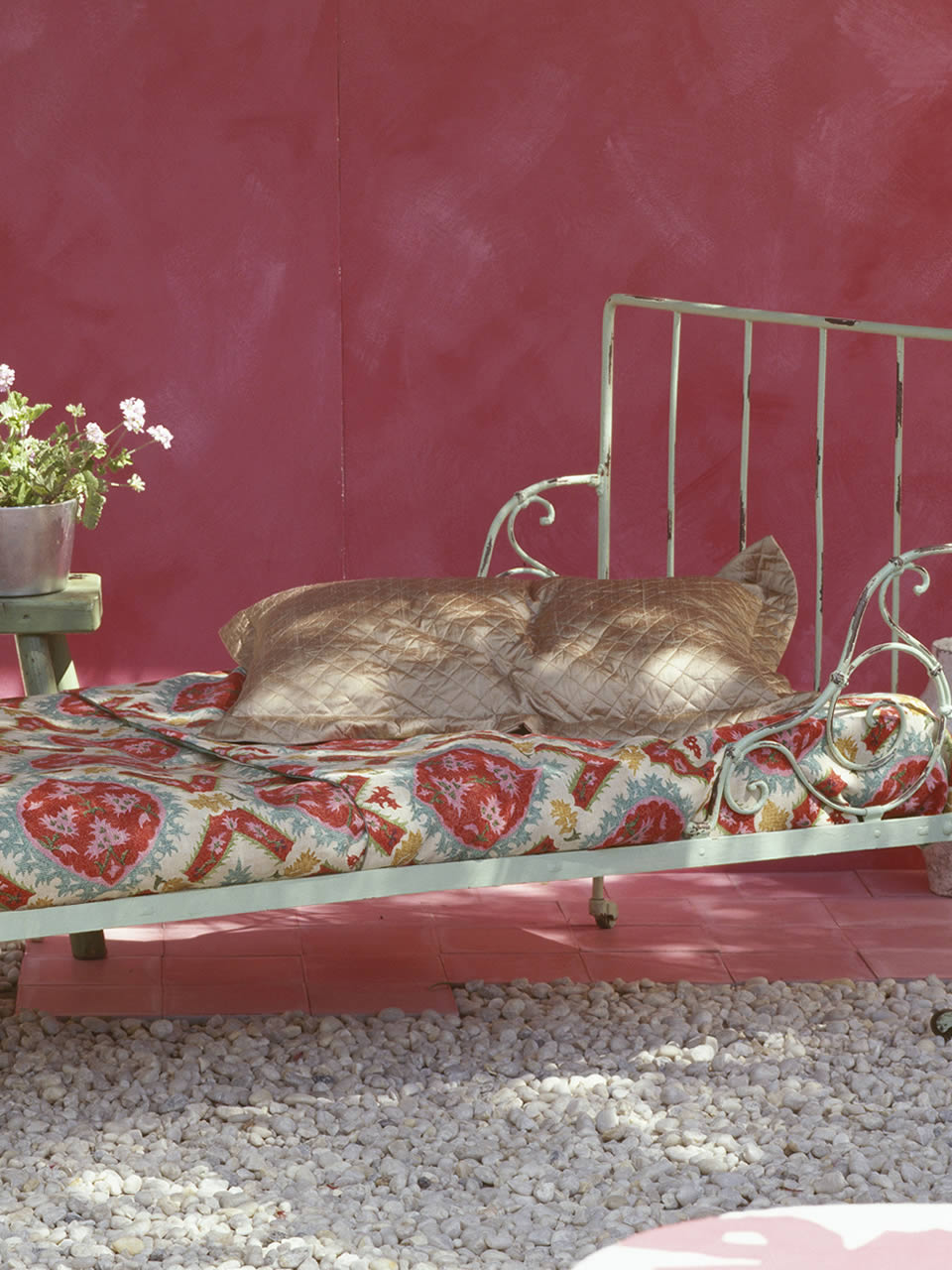
In Australia you can purchase these paints and get a similar effect. They give a gorgeous mottled patina and make it much easier to get away with rich strong colour. The lime in the paints bloom which creates the mottled effect and will perform differently depending on the temperature and weather conditions at the time of application so ensure that you read the instructions carefully.
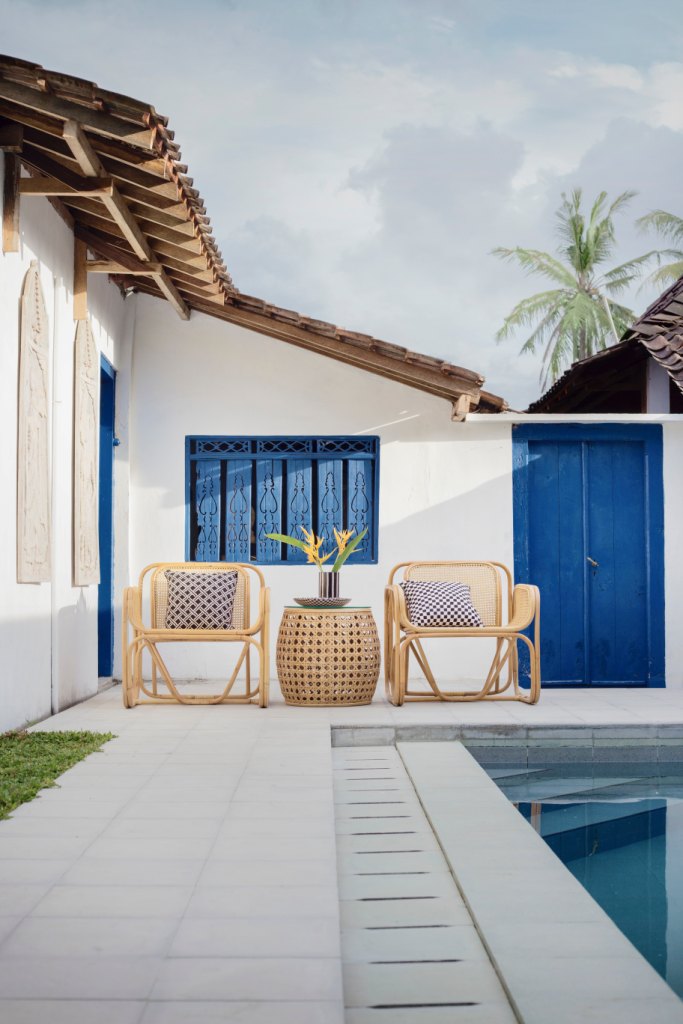
A traditional white adobe wall with a cobalt blue accent is reminiscent of a mudbrick Spanish style home.
Using accent colour on exterior walls
This is generally confined to very contemporary homes and it is something that I am beginning to see a trend in. Bright colours have become mainstream for the exterior of apartment blocks and the use of it in these circumstances helps to break up a wide expanse of neutral colours and brings definition to the design.
If you are going to use colour for exteriors of residential houses then you need to ensure that it is used judiciously. The main points to consider when looking at your home or the plan for your new home are:
- The individual design features that your house has and how you want to define these.
- Don't just randomly pick a wall to paint a different colour as this is a haphazard approach that may or may not work.
- Appreciate that you can drastically change the look of a house by using different tones of a neutral to make walls stand out or recede. This is magnified when using strong colour and one that is very bright will really define the look of the exterior.
- Consider which areas you want to pop. Possibly a blade wall or a central feature that breaks up the house.
- Once you have decided this, consider the depth of colour that you want on the remaining walls.
- A bright colour will look different if it is used on a predominantly dark grey/off black house to one that is painted in fresh white. You may have seen a bright green used on an exterior that you love but just ensure that it was used in the same context as your house exterior.
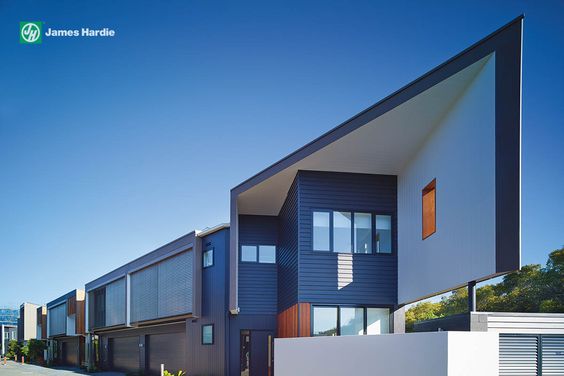
The deep blue has been used very effectively on this contemporary home. Used as the main colour, it makes the use of fresh white and the timber accents pop rather than the colour being the feature.
Using colour in an outdoor room
This is one of the safest ways to introduce some colour into your exterior scheme. A colourful outdoor table and chairs makes a lovely uplifting statement or you can use more neutral outdoor furniture with a colourful rug or accessories.
I like to treat an outdoor room as I would a room indoors and so you should decorate it in a way that you would for one inside.
Related: How to link your outdoor room to the inside – 5 easy steps
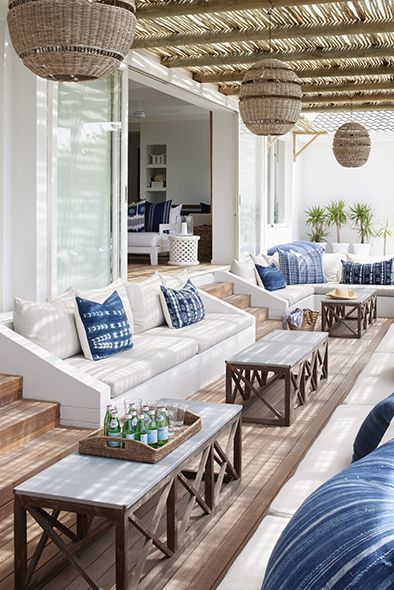
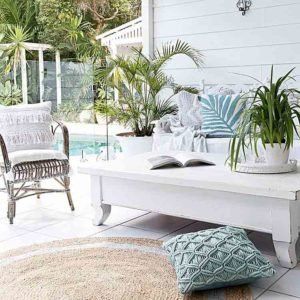
I would love to hear if anyone has introduced some colour on the exterior of their homes. Have you been bold enough to copy a much loved look from overseas? Or have you built a contemporary house with a splash of colour or a deep rich colour for the main walls? Have you even been game to paint your front door a bright colour? Leave a comment below to let us know.
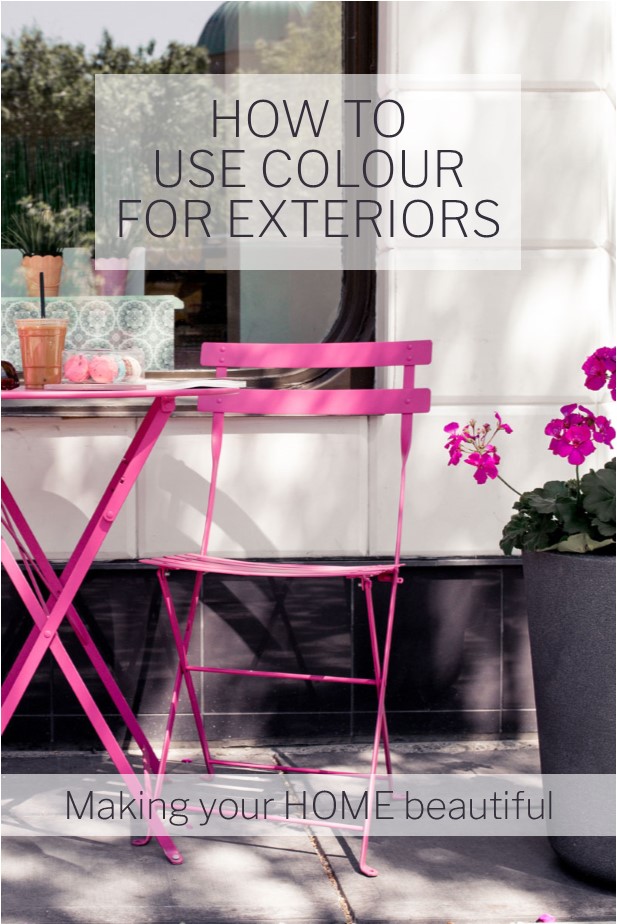
Don't forget that if you are building or renovating your home that I have an invaluable Free Resource Library containing check lists and e-books. Click here for access.

I have red brick on my house exterior and always wondered how it would look with a lime wash. It might give me more options for the siding and trim colors.
And thanks for the tip about adding gray to a color to make it more approachable if you prefer a bit more neutral in your decor. I feel like I’m always drawn to “grayed out” colors and now I know why!
We live on the lake and our home is light red brink and vinyl siding. We are changing the windows and selected black casing. We are changing the siding and have selected a dark blue or gray. Originally thinking white trim but wondering about black. The roof is light gray/brown and done in 2016 so that won’t change.
Hi Dawn both trims would work but you just have to consider the look that you want. White trim will give you a fresh look and will make the sidings look darker which will be more classic coastal but black trim will look more sophisticated and will make the blue or gray that you use look lighter in comparison. Hope this helps you to make a decision! Samantha
Hi. Just a query on external colour paint. We have guttering that is Colourbond Ironstone. The house is situated on a cattle station with lots of red dust so we are not keen on a light colour as it can get stained. We are also not that keen on anything super dark because of the high temperatures of Qld summers. Would you have any suggestions. I am at a loss after about 10 colour sample pots and too many suggestions from outsiders. Thanks
Hi Danielle I think you need to look at something that is very earthy like Dulux Gnu Tan – not too light or too dark and should stand up to the red dust and goes well with blue grey. Something along those lines should work. Good luck Samantha
Hi Samantha. Apologies if this isn’t the best post to comment on. I love your blog (your advice helped me finalise our interior white, which nearly had me tearing my hair out) and would love your opinion on something if you have the time. We need to repaint our circa-1890 Victorian weatherboard house. We have woodland grey guttering/something similar in terms of roofing (previous owner painted roof and installed guttering). This isn’t a colour I usually deal with (I love soft neutrals, whites, and desaturated colours) so I cannot for the life of me figure out what colour to paint our weatherboards that will go with this guttering (exterior trim will also be white). The inside is painted in Haymes’ whitewash 1 and has gold fixtures/floors on the warm side. It’s going to be a rental eventually so I’d like something with broad appeal, but nothing too overtly modern due to the age of the house. Do you have any advice? I’d really, truly appreciate it. Hope you have a great night.
Oh, I should mention. The front of the house is south-west facing and under some big trees so it’s shaded for 90% of the day 🙂
Hi Lauren you need to look at some green based stone coloured pale neutrals to go with Woodland Grey. Something like Dulux Stone or Putty could work? Perhaps try out large samples of these with the white trim to see if you like the effect. Good luck Samantha